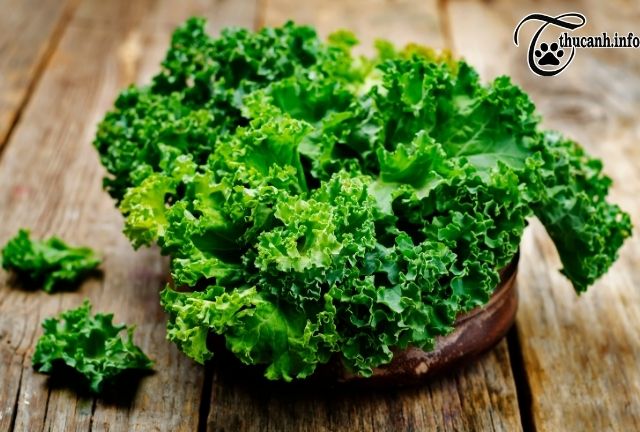Discovering the nutritional needs of your beloved hamster is crucial for their overall well-being. If you’ve been wondering, “Can hamsters eat kale?” you’ve come to the right place. In this comprehensive guide, we will explore the safety, benefits, and considerations of feeding kale to hamsters.
Let’s dive into the world of kale and uncover whether it can be a healthy addition to your furry friend’s diet.

Do hamsters eat kale?
1, Can Hamsters Eat Kale?
Yes, hamsters can eat kale. In fact, kale is a nutritious addition to their diet. However, it is important to keep in mind that kale should be fed in moderation. Too much kale can cause digestive issues such as diarrhea in hamsters.
2, The Nutritional Composition of Kale

Is kale ok for hamsters?
Kale is a nutrient-rich leafy green vegetable that can be a valuable addition to your hamster’s diet. It contains an array of essential vitamins, minerals, and fiber, making it a nutritious choice for your furry friend’s overall well-being.
2.1, Vitamins in Kale for Hamsters
Kale is packed with important vitamins, including vitamin A, vitamin C, and vitamin K. These vitamins play a vital role in supporting your hamster’s immune system, promoting healthy growth and development, and enhancing their overall health.
2.2, Minerals in Kale for Hamsters
Kale is a good source of essential minerals such as calcium, iron, and potassium. These minerals are crucial for maintaining strong bones and teeth, supporting proper blood circulation, and ensuring healthy bodily functions in your hamster.
2.3, Fiber Content in Kale for Hamsters
Kale contains a high amount of dietary fiber, which aids in digestion and helps prevent digestive problems in hamsters. The fiber promotes regular bowel movements, prevents constipation, and supports a healthy digestive system.
3, Digestive Health Support
The fiber content in kale provides excellent support for your hamster’s digestive health. It helps regulate their bowel movements, prevents constipation, and maintains a healthy gastrointestinal system.
3.1, Immune System Boost
The vitamins, particularly vitamin C, present in kale can give your hamster’s immune system a boost. A robust immune system helps protect them from diseases and enhances their ability to fight off infections.
3.2, Overall Well-being Promotion
By incorporating kale into your hamster’s diet, you can contribute to their overall well-being. The combination of vitamins, minerals, and fiber in kale supports their growth, ensures proper organ function, and helps them maintain a healthy weight.
Incorporating kale into your hamster’s diet, in appropriate portions, can provide them with valuable nutrients and support their overall health. Remember to introduce new foods gradually and consult with a veterinarian to ensure the best diet for your hamster’s specific needs.
4, Safety Considerations for Feeding Kale to Hamsters
Feeding kale to hamsters can be a nutritious choice, but it is important to be aware of potential safety considerations. Some hamsters may experience digestive issues or allergies when consuming kale. It is essential to monitor your hamster’s reaction to kale and seek veterinary advice if any adverse symptoms occur.
4.1, Digestive Issues and Allergies
While kale is generally safe for hamsters to eat, some individuals may have sensitive digestive systems or allergies to certain foods. Introduce kale gradually into your hamster’s diet and observe their response. If you notice any signs of digestive discomfort or allergic reactions, such as diarrhea, bloating, or skin irritations, discontinue feeding kale and consult a veterinarian.
4.2, Risks of Overfeeding Kale
Although kale is nutritious, it should be offered in moderation. Overfeeding kale can lead to an imbalance in the hamster’s diet and potentially cause digestive problems. Ensure that kale is part of a well-rounded and balanced diet, including other suitable fruits, vegetables, and hamster food.
5, Introducing Kale into a Hamster’s Diet

Can hamsters eat baby kale?
When introducing kale to your hamster’s diet, it is important to follow a gradual introduction process. Start by offering a small piece of kale and observe your hamster’s reaction. If they tolerate it well, you can gradually increase the portion size over time.
5.1, Gradual Introduction Process
To introduce kale, offer a small amount as a treat or mix it with their regular food. Monitor your hamster’s response for a few days to ensure they tolerate it well. If there are no adverse reactions, you can continue incorporating kale into their diet.
5.2, Monitoring Hamster’s Reaction to Kale
Keep a close eye on your hamster’s behavior, appetite, and stool consistency when introducing kale. If any unusual changes occur, such as a loss of appetite or irregular bowel movements, discontinue feeding kale and consult with a veterinarian.
6, Portion Control and Moderation
Maintaining proper portion control and moderation is crucial when feeding kale to hamsters.
6.1, Recommended Portion Sizes
Offer small, bite-sized pieces of kale to your hamster. The portion size should be appropriate for their size and weight. As a general guideline, one or two small leaves of kale per week is sufficient.
6.2, Frequency of Offering Kale
While kale can be a healthy addition to a hamster’s diet, it should not be offered every day. Providing kale as an occasional treat, once or twice a week, helps maintain a balanced diet and prevents overconsumption.
By following these safety considerations and guidelines, you can incorporate kale into your hamster’s diet responsibly, ensuring their health and well-being.
7, Diversifying Your Hamster’s Diet Beyond Kale
While kale is a nutritious option, it is essential to provide your hamster with a diverse diet. Incorporating other safe and nutritious vegetables ensures a well-rounded nutritional intake.
7.1, Safe and Nutritious Vegetables for Hamsters
There are various vegetables that you can offer to your hamster alongside kale. Examples include carrots, bell peppers, cucumbers, and broccoli. These vegetables provide essential vitamins and minerals, contributing to your hamster’s overall health.
7.2, Suitable Fruits for Hamsters
In addition to vegetables, certain fruits can be included in your hamster’s diet. Safe fruit options for hamsters include apples, bananas, berries, and melons. Remember to offer fruits in moderation due to their sugar content.
7.3, Protein Sources for Hamsters
Hamsters also require a source of protein in their diet. Good protein sources include cooked chicken, boiled eggs (without the shells), and small amounts of plain, unseasoned tofu. These options help meet your hamster’s nutritional needs.
8, FAQs
1, Can kale be the main ingredient in a hamster’s diet?
No, kale should not be the main ingredient in a hamster’s diet. Hamsters require a varied diet that includes a balance of protein, carbohydrates, and fat. Kale should only be fed as a small part of their overall diet.
2, What are some other vegetables that hamsters can eat?
Hamsters can eat a variety of vegetables including cucumber, carrots, broccoli, and sweet potato. It is important to ensure that the vegetables are washed thoroughly and cut into small pieces before offering them to your hamster.
3, Can hamsters eat kale stems?
Yes, hamsters can eat kale stems. However, the stems are tougher than the leaves, so it is important to chop them up into small pieces before offering them to your hamster.
4, Can too much kale cause health problems for hamsters?
Yes, too much kale can cause digestive issues such as diarrhea in hamsters. It is best to feed kale in moderation, once or twice a week as part of a balanced diet.
5, Can baby hamsters eat kale?
Yes, baby hamsters can eat kale. However, it is important to introduce new foods slowly and monitor their reaction. Baby hamsters have delicate digestive systems, so it is best to start with a small amount of kale and gradually increase the amount over time.
6, Conclusion
Can hamsters eat kale? According to Thu canh Feeding kale to hamsters can provide numerous nutritional benefits. It is rich in vitamins, minerals, and fiber, promoting digestive health, immune system function, and overall well-being.
Kale offers essential nutrients, including vitamin C, vitamin K, calcium, and antioxidants, which contribute to your hamster’s health and vitality.
As responsible hamster owners, it is crucial to offer kale and other foods in moderation. Providing a balanced diet that includes a variety of vegetables, fruits, and protein sources ensures your hamster’s nutritional needs are met.
By understanding the benefits of kale and incorporating other nutritious options into your hamster’s diet, you can provide them with a well-balanced and satisfying meal plan. Remember to observe your hamster’s preferences and consult with a veterinarian for personalized dietary recommendations.


